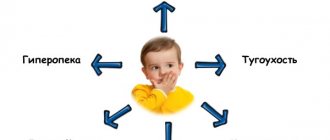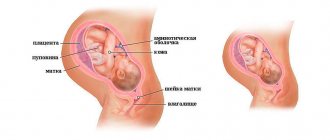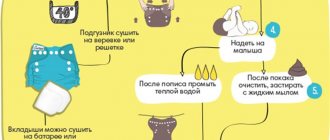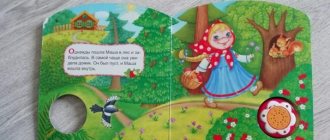Time is a very important resource that is always in short supply. There's never enough of it. You always want there to be more of it.
People who know how to properly distribute this resource achieve a lot in their lives. Those who do not value time and waste it rarely achieve serious success. In order to complete any task on time, you need to assign a certain period of time during which it can actually be completed, and adhere to the established deadlines. Only by setting specific goals for yourself can you achieve your goals. What could be the time period? It can be different: a week, a month, a half-year, a year, etc. In this article we will talk about such a period as a quarter.
What is a quarter? How many months are there in each quarter?
Translated from Latin, this word means “quarter”. Accordingly, a quarter is ¼ of a year. Thus, it becomes clear that we have only four quarters in a year. Knowing that a year consists of twelve months, you can calculate the number of months in one quarter. How many months are there in each quarter of the year? Through simple mathematical calculations we arrive at the following: 12 / 4 = 3. In total, we have 4 quarters in a year, each of which has three months. Quarters are numbered with Latin numerals. In English-speaking countries, this time period is indicated by Arabic numerals. Each of them is preceded by the letter Q.
Baby's sleep at 15 months: features of the regime
The daily routine in general and sleep in particular for a 15-month-old baby is not much different from the one you practiced a month ago.
This age is no longer considered infantile, but younger childhood, so changes from month to month are not so noticeable. Sometimes, of course, a child’s sleep changes at 15 months, but this depends, rather, not on his reaching a certain age, but on habits and preferences, which, once formed, nevertheless do not stand still, but are adjusted based on circumstances .
How much sleep does a 15 month old baby need?
The norm remains the same as before: only 13-14 hours, of which 11-12 are at night. There can be only one nap during the day, quite long: by this age, many children easily and naturally come to this format. However, some still require two periods of rest during the day.
How do you know if your baby needs a second nap during the day? Just watch him: if a 15-month-old child does not sleep during the day for more than 30-40 minutes in one “approach,” most likely he is ready to switch to a single daytime nap. If the baby willingly sleeps for 1-1.5 hours twice a day, there is no need to rush him: sooner or later the time will come when he clearly demonstrates that he is ready to change his regime.
What should a 15-month-old baby's sleep and wakefulness routine be like?
We suggest that you familiarize yourself with the general points that should be present in the daily schedule of life and development of a 1.3-year-old child. Of course, this list can be supplemented or modified on individual items - depending on the character, temperament, habits, employment of the mother and other significant factors.
A 15-month-old child's day should begin at approximately 7 a.m. and end no later than 10 p.m. It usually includes:
- rising and hygiene procedures, including brushing teeth;
- morning work-out;
- breakfast;
- developmental activities;
- walk in the fresh air;
- active games - outdoors or at home;
- dinner;
- daytime nap;
- activities or games;
- afternoon tea, after which you can go outside again;
- communication with family;
- dinner;
- water procedures;
- putting it to bed at night.

If a child’s sleep schedule at 1.3 years old involves 2 periods of rest during the day, the proposed schedule can be adjusted, for example, putting the baby to bed after the first walk, and moving lunch and the second nap to a later time.
Also, based on how many times a 15-month-old child sleeps during the day, optimal periods of wakefulness are determined. In general, they should not exceed 6-7 hours.
What are the months in each quarter?
The year has a similar division into seasons. There are also four of them, each lasting three months. However, there are differences between quarters and seasons. Seasons represent the seasons of the year. There are four seasons in total: winter, spring, summer and autumn.

However, the winter season does not begin with the beginning of the year. The first month of winter is the last month of the year – December. The quarter is characterized by division from the beginning of the year. That is, the first quarter begins on January 1. Further, both in seasons and in quarters, the months are counted in order.
This way we can find out which months are in the first quarter. These are January, February and March. The total is 31 + 28 (29) + 31 = 90 (91) days in the first quarter of the year. The number of days can only change in the first quarter, because February does not have 28 days in a leap year, but once every 4 years it consists of 29 days.
Q2 – what months are these? The second quarter of the year includes the next three months - April, May and June. Total number of days: 30 + 31 + 30 = 91. This number of days is constant from year to year.
Q3 – what months are these? July, August, September - these are the three months that make up the third quarter of the year. Total number of days: 31 + 31 + 30 = 92.
And finally, the last quarter of the year consists of the following months: October, November and December. Total days: 31 + 30 + 31 = 92.
Attention: temperature exception!
There is one exception among bacterial infections, which in children can actually occur without any other symptoms other than high fever. These are urinary tract infections.
Adults with the same condition experience a frequent urge to urinate and sharp pain in the lower back, but children, fortunately, do not feel anything like that. Therefore, in order not to miss the potential development of a urinary tract infection in the absence of symptoms, a child with a high fever is usually prescribed a clinical urine test.
So, if the baby has a fever and there are no other symptoms besides it, then most likely he is either overheated or has been attacked by a viral infection. In rare cases, a child may have a urinary tract infection - these concerns can easily be allayed with a urine test.
How can you determine before the doctor arrives and before testing whether your child has a viral or bacterial infection? Let's make a reservation right away - the sign we are talking about cannot in any case be called a 100% accurate diagnostic method, but often it helps to correctly determine the nature of the infection.
As a rule, with a viral disease, the child’s skin retains a bright, pink tint. Whereas with a bacterial infection, the skin becomes “deadly” pale.
Simply put, if the baby’s temperature has “flyed up” to 38.5° C, but at the same time his ears and cheeks are scarlet, then you don’t have to worry, this is a viral infection that can be “suppressed” with home-made, non-drug methods. But if a child has a high temperature and at the same time he has become as pale as snow, call the doctors for help, you need them now and urgently!
Why is this division of the year needed?
Typically, the “quarter” period is used in those institutions where it is necessary to prepare reports, for example in statistics or accounting.

This division allows you to bring documentation into the system, correctly draw up plans and monitor their implementation. The annual report, of course, is very important, but until the whole year has passed, quarterly reporting allows you to track how timely the assigned tasks are being accomplished. This makes it possible to adjust their implementation in time, if necessary, in order to reach the desired indicators at the end of the year. Reports are executed once a quarter. How many months it takes to complete a particular task determines the number of quarters allocated to each goal.
VAT declaration
The current VAT reporting form, as well as the procedure for filling it out, was approved by order of the Federal Tax Service of Russia dated October 29, 2014 No. ММВ-7-3 / [email protected] For codification, two-digit numbers are used, in which the first digit is 2, and the second determines the quarter number in chronological order. For example, the tax period code for the 2nd quarter of 2020 for the value added tax return is 22.
And what quarter is tax period 24? For value added tax reporting, this code indicates the 4th quarter. Accordingly, tax period 23 is which quarter? This is the third quarter of the reporting year.
Similar rules are established for fiscal reporting, which must be submitted quarterly. When filling out reporting forms for water tax or UTII, indicate similar codes. For example, use tax period code 24 for the 4th quarter.
Tax period code 21 - what is this in the UTII declaration? This is a report for the first three months of the year (Q1).
Interesting Facts
In the word "quarter" the stress falls on the second syllable. However, many people pronounce this word incorrectly, emphasizing the first syllable. You need to remember how to pronounce it correctly so as not to look illiterate.
Previously, in Soviet times, the quarterly year began in October. This fact caused confusion in the documentation, so this practice was soon abandoned.
Since at the end of each quarter, as a rule, employees of accounting, statistics and other organizations have to make a report, this period of time is also called the reporting period, as well as the tax period.
The word "block" can refer not only to a period of time, but also to a row of houses between two intersections on a street.
“It’s like being underwater for 3 months.” Voronezh resident with COVID-19 spent 90 days in intensive care
Doctors call the case of 47-year-old Voronezh resident Alexander Bezrukov unique. The patient struggled with coronavirus infection in intensive care for three months, of which he spent 76 days on a ventilator. This is a record. Weeks without improvement and patients dying before our eyes are what became Alexander’s daily reality. And yet - victory, Alexander recovered. The correspondents of “MY!” learned about how the Voronezh resident suffered the brunt of the coronavirus, what he felt on the ventilator and how he is now recovering from the disease.
“It’s a shame that I didn’t believe in coronavirus”
- At home - good, that's not the right word. All I could think about was how to overcome the infection so that I could quickly return to my family. But, as you already know, it didn’t work out quickly. Now there is still heaviness in the lungs. Of course, I was greatly weakened. But it’s okay, everything will be fine,” he talks with a positive attitude about his well-being, “MINE!” Alexander Bezrukov.
But just three months ago it was not normal. It all started at the end of May. Alexander says that after a working day he felt unwell: first, weakness in his body, then his temperature rose to 37. The man works as a driver, the windows of the car are often open, so he chalked it up to the fact that he simply had a cold.
“I didn’t believe in the existence of the coronavirus at all, I thought it was all bullshit, oh, what a shame I didn’t believe,” says Alexander. “I thought, well, I have a little cold, it doesn’t happen to anyone, I’ll take a pill and everything will go away.” But it was not there. The temperature crept up, but it was not long before it was brought down. However, there was no need to rejoice at this. I go into the bathroom and realize that something strange is happening. Shaving foam smells like feces, soap has the same smell. I can't smell my eau de toilette, or the aroma of coffee, or anything. There is this unpleasant smell all around.
Alexander stayed at home for several days, but his condition worsened, his weakness increased, his temperature did not decrease, and on top of everything else, he developed a cough and shortness of breath.
“I continued to not believe in “corona”, I was sure that I was just suffering from the flu, but my relatives insisted that I check my lungs,” Alexander continues the story. — At the clinic I underwent a CT scan and, please, the tests showed viral pneumonia. At home, I already called an ambulance, but they did not hospitalize me; they prescribed antibiotics and injections. But they did not produce results. I was getting worse and worse, I began to choke and was eventually hospitalized.
Trial
Alexander was taken by ambulance to Emergency Hospital No. 1, the doctors performed a second computed tomography scan on him, which showed moderate-to-severe degree 3 (CT-3) damage to his lungs. For three days the man was in a regular ward, but the treatment did not give positive dynamics, his condition worsened, and the doctors decided to transfer the seriously ill patient to intensive care and connect him to a ventilator.
“I don’t know if it was a ventilator, there was a mask, yes, with tubes,” says the man. — They put it on me, the principle of operation is this: you inhale through your nose, and it helps you exhale. The feeling is as if you went underwater with scuba gear. Its presence did not frighten me; on the contrary, it gave me hope that I was breathing, and therefore living. And anyway, I didn’t intend to die. I was preparing myself for the fact that I would only get out of here with my own feet.
According to Alexander, at first it was very difficult for him, because he had to constantly lie only on his stomach, the doctors did not allow him to turn on his back or side, but over time he adapted to all the inconveniences. The man was eventually able to cope with the disease. Read Alexander’s detailed story in the next issue of “MINE!”
Mental and emotional development of a child at 1 year 3 months
A child of 1 year and 3 months loves to imitate adults. He repeats their actions, habits and even speech. The baby says the simplest words, for example, “mom”, “dad”, “give”. The baby complements his speech with facial expressions, intonation and gestures. He understands what adults tell him and fulfills their demands.
At 1.3 years old, a child’s vocabulary consists of 10 words. Every week it is replenished with 2-3 new titles.
The child simplifies words that are difficult for him, for example, he says not “tractor”, but “katol”.











